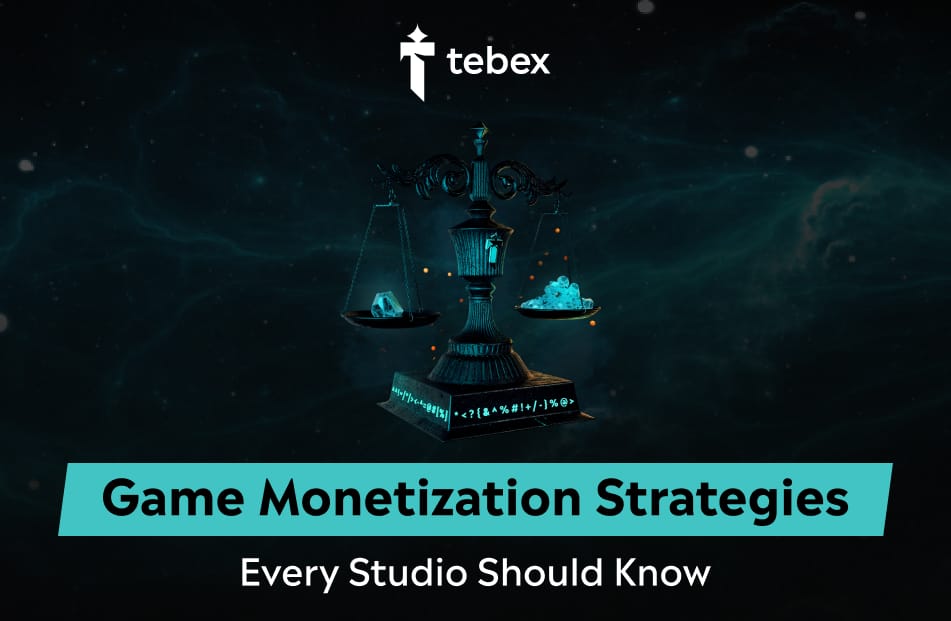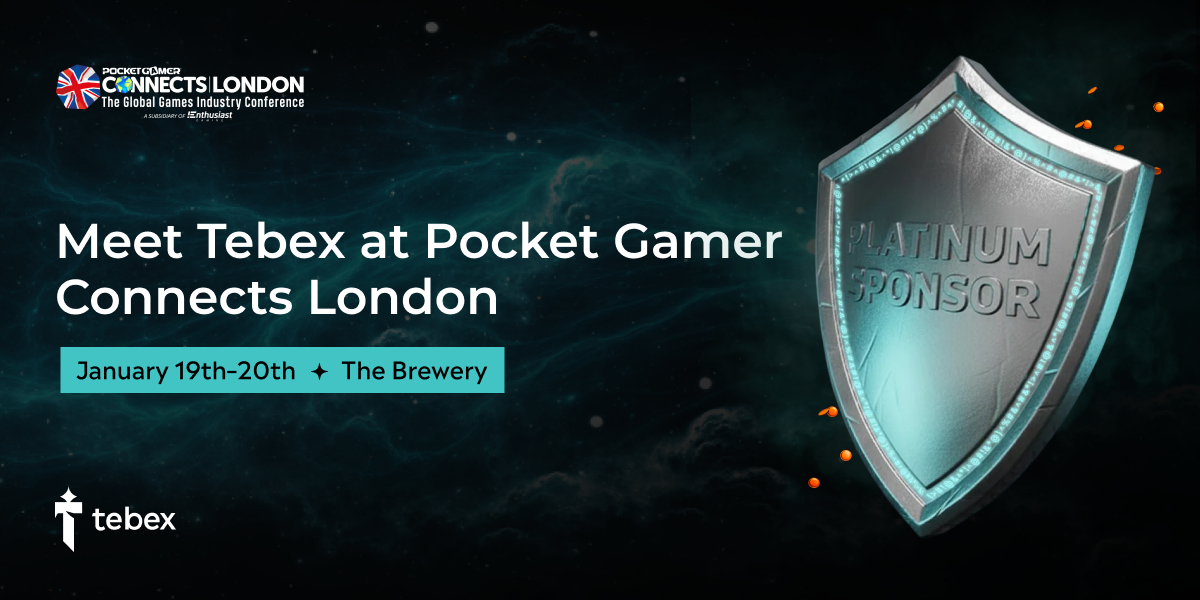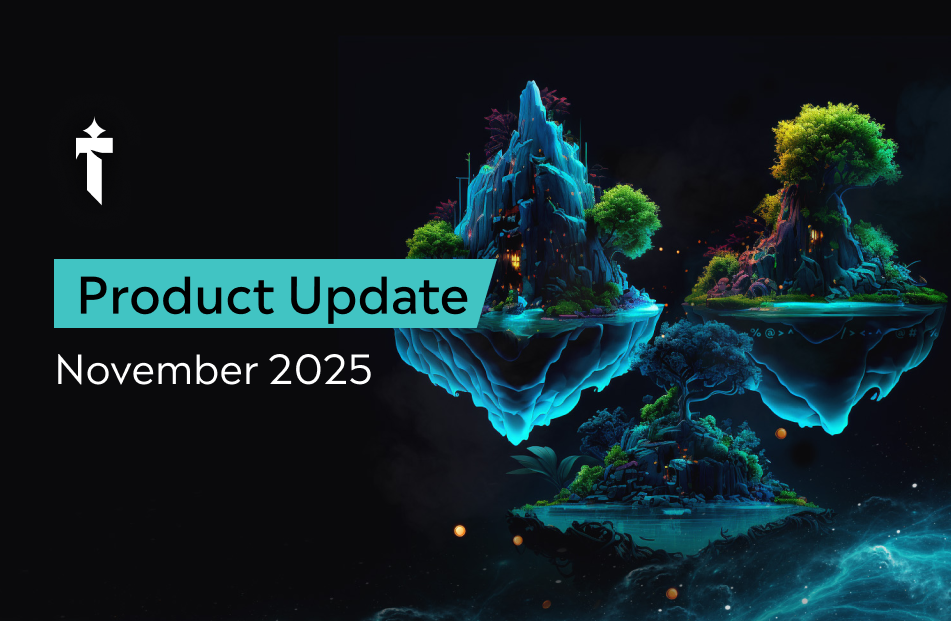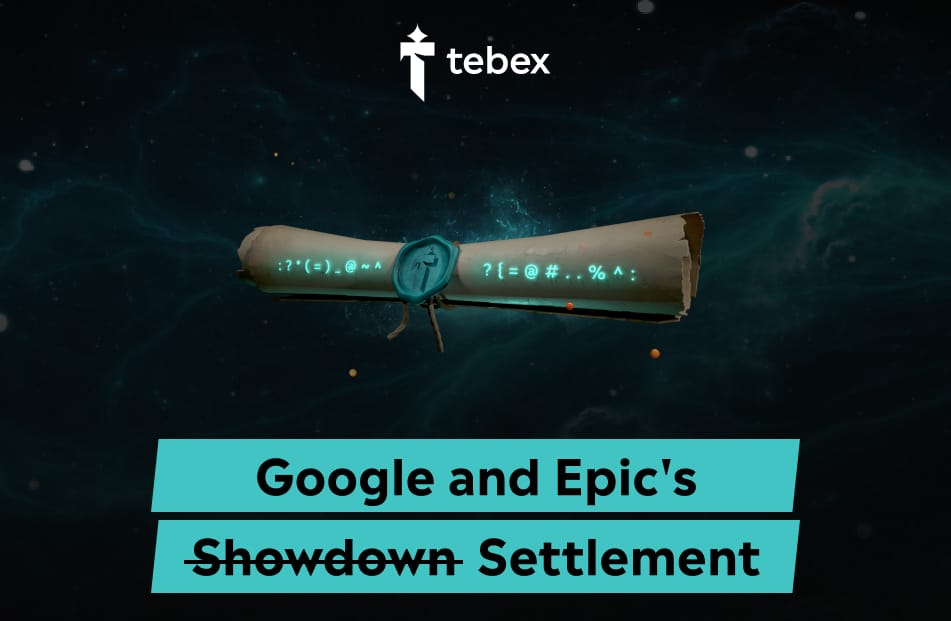Game Monetization Strategies Every Studio Should Know
Maximize your game monetization with Tebex. We handle payments, taxes, and compliance so you can focus on building and scaling your player base.

Building a successful game is only half the battle - turning that creation into sustainable revenue represents the challenge that makes or breaks most independent developers. Game monetization isn't just about making money; it's about creating a balanced ecosystem where players find value in their investments while studios generate the income needed to continue developing amazing experiences. After working with thousands of game developers over 14 years, we've seen how the right monetization approach can transform a struggling indie project into a thriving gaming business.
The landscape of game monetization has evolved dramatically from the simple "pay once, play forever" model that dominated early gaming. Today's players expect diverse ways to engage with and support their favorite games, from cosmetic purchases that let them express individuality to premium subscriptions that unlock exclusive content. However, this complexity creates new challenges for independent developers who must balance revenue generation with player satisfaction while navigating platform policies and technical implementation hurdles.
Independent game developers face unique constraints that larger studios don't encounter. Limited budgets mean every monetization decision carries significant weight, while smaller teams often lack the resources to implement complex systems or recover from monetization mistakes that alienate their player base. Understanding which game monetization strategies work best for different types of games, audiences, and development resources can mean the difference between a game that sustains a studio and one that forces developers back to day jobs.
Key Takeaways
• Free-to-play models dominate mobile gaming revenue - Over 95% of mobile game revenue comes from free-to-play titles with in-app purchases, making this the most viable approach for reaching mass audiences on mobile platforms
• Player experience must drive monetization decisions - Successful games integrate monetization naturally into gameplay rather than interrupting it, with the most profitable titles offering value that enhances rather than restricts the core experience like Fortnite's Battle Pass offers cosmetic rewards that enhance player expression without affecting gameplay balance
• Multiple revenue streams reduce risk and increase stability - Games that combine several monetization methods (ads, purchases, subscriptions) typically generate 40-60% more revenue than single-method approaches while providing fallback options if one stream underperforms
• Platform compliance requirements vary significantly - iOS, Google Play, Steam, and console platforms each have different policies around monetization, age ratings, and content restrictions that can affect implementation and revenue potential
• Analytics and iteration are essential for optimization - The most successful monetization strategies emerge from continuous testing and refinement based on player behavior data, with top-performing games typically testing 3-5 different approaches before finding their optimal model
Understanding Game Monetization
Game monetization represents the various methods developers use to generate revenue from their games, extending far beyond the traditional model of selling a complete product for a fixed price. For independent developers, effective monetization creates the financial foundation necessary to continue developing games, support existing titles, and grow their studios into sustainable businesses.
The core principle behind successful game monetization lies in creating genuine value for players while generating consistent revenue streams for developers. This balance requires understanding what motivates players to spend money in games - whether that's convenience, customization, social status, or simply supporting developers they appreciate. The most effective monetization strategies feel like natural extensions of the gameplay experience rather than interruptions or obstacles.
Modern game monetization encompasses several distinct approaches, each with unique advantages and challenges. Mobile game monetization typically relies on free-to-play models with in-app purchases and advertising, capitalizing on the massive reach of smartphones and tablets. PC games often blend traditional premium sales with ongoing content updates and cosmetic purchases, while console games traditionally focus on upfront sales supplemented by downloadable content and season passes.
The psychology of game monetization reveals important insights for developers. Players are more likely to make purchases when they feel the money spent provides clear value, whether through enhanced gameplay, exclusive content, or social recognition within the game's community. Successful monetization respects player choice, offering multiple ways to engage with and support the game without creating unfair advantages or pay-to-win scenarios that damage the core experience.
For independent developers, understanding monetization means recognizing the relationship between game design and revenue potential. Games designed with monetization in mind from the beginning typically perform better financially than those where monetization is added as an afterthought. This doesn't mean compromising creative vision, but rather ensuring that revenue opportunities align naturally with the players' journey through the game.
The timing of monetization implementation matters significantly for indie developers. Introducing monetization too early can alienate players who haven't yet invested emotionally in the game, while waiting too long might miss opportunities to capture revenue from engaged users. The most successful approach typically involves building player trust and engagement first, then introducing monetization options that enhance rather than restrict the established experience.
Popular Game Monetization Models
The game monetization landscape offers several proven models that independent developers can adapt to their specific games and target audiences. Understanding the strengths and limitations of each approach helps developers make informed decisions about which strategies align best with their game design, platform requirements, and audience expectations.
Free-to-Play and In-App Purchases
The free-to-play model with in-app purchases has become the dominant approach for mobile game monetization, generating over $80 billion annually across mobile platforms. This model removes the initial barrier to entry by allowing players to download and experience the core game without cost, then offers optional purchases that enhance the experience or provide convenience.
Successful free-to-play games typically offer multiple types of in-app purchases to appeal to different player motivations. Cosmetic items like character skins, weapon appearances, or customization options provide visual personalization without affecting gameplay balance. Convenience purchases such as extra lives, energy refills, or time skips appeal to players who want to progress faster or play longer sessions. Premium currencies allow players to access special items, unlock content early, or participate in exclusive events, bridging the gap between gameplay and monetization.
The key to successful free-to-play monetization lies in maintaining game balance while providing clear value for purchases. Players must feel that spending money enhances their experience rather than being necessary to enjoy the game. The most profitable free-to-play games achieve this by designing engaging core gameplay that remains enjoyable without purchases, while making paid options feel like worthwhile rewards for invested players.
However, free-to-play models present challenges for independent developers. Creating enough content and features to support ongoing purchases requires significant development resources, while balancing monetization with player satisfaction demands careful testing and iteration. Additionally, free-to-play games typically require larger audience numbers to generate substantial revenue, making marketing and user acquisition critical factors for success.
Ad-Based Monetization
Advertising revenue provides an alternative monetization approach that doesn't require players to make direct purchases, instead generating income through video ads, banner displays, and sponsored content. This model works particularly well for games with broad appeal and high engagement levels, as advertisers pay based on impressions, clicks, or completed video views.
Video ads represent the most lucrative form of advertising monetization, typically offering players rewards for watching 15-30 second promotional content. Rewarded video ads integrate naturally into game progression by providing extra lives, bonus currency, or temporary power-ups in exchange for ad viewing. Interstitial ads appear between game sessions or at natural break points, while banner ads display continuously during gameplay.
The effectiveness of ad-based monetization depends heavily on implementation quality and audience characteristics. Games with younger demographics or broad casual appeal typically generate higher ad revenue due to advertiser demand for these audience segments. However, poorly implemented ads can significantly damage player experience, leading to negative reviews and reduced retention rates.
For independent developers, ad-based monetization offers several advantages. It requires minimal development effort to implement through advertising networks, doesn't depend on players having disposable income for purchases, and can complement other monetization methods. However, ad revenue typically requires large audience numbers to generate significant income, and developers have limited control over ad content quality and relevance.
Micro-transactions in PC Games
Micro-transactions in PC games represent a hybrid approach that combines elements of premium and free-to-play models. Players typically purchase the base game at full price, then have opportunities to buy additional content, cosmetic items, or convenience features through small transactions ranging from $1-10.
PC game micro-transactions often focus on cosmetic customization, allowing players to personalize characters, weapons, or environments without affecting gameplay balance. Games like Counter-Strike: Global Offensive and Dota 2 have generated hundreds of millions through weapon skins and character cosmetics that provide no competitive advantage but allow players to express individuality and show support for the game.
Season passes and battle passes represent another successful micro-transaction approach for PC games. These systems provide players with progression tracks that unlock rewards over time, typically combining free rewards with premium tiers accessible through purchase. This model creates ongoing engagement while generating recurring revenue from dedicated players.
The challenge with PC game micro-transactions lies in maintaining community trust and avoiding pay-to-win perceptions. PC gamers tend to be more vocal about monetization concerns compared to mobile users, making community communication and transparent monetization policies essential for success. Developers must clearly communicate what purchases provide and ensure that paid content doesn't create unfair advantages in multiplayer environments.
Premium Purchases
The classic purchase model involves players paying upfront for complete game access, representing the traditional approach that dominated gaming before free-to-play models became prevalent. This model works particularly well for games with strong narrative content, unique gameplay mechanics, or niche audience appeal that justifies the initial investment.
Premium games offer several advantages for independent developers. They provide immediate revenue from each sale, don't require ongoing content creation to support monetization, and allow developers to focus entirely on creating the best possible game experience without monetization considerations affecting design decisions. Additionally, premium games often receive more favorable coverage from gaming press and audience communities that appreciate complete, non-monetized experiences.
However, premium models face significant challenges in today's market. The success of free-to-play games has conditioned many players to expect free access, particularly on mobile platforms where premium games represent less than 5% of total revenue. Marketing premium games requires convincing potential players that the upfront cost provides sufficient value, often necessitating demos, reviews, or significant marketing investment.
For indie developers, premium models work best when targeting specific audience segments that value complete experiences over free alternatives. PC gaming communities, retro gaming enthusiasts, and players seeking narrative-driven experiences often prefer premium games that provide full access without ongoing monetization. Success with premium models typically requires exceptional game quality, strong marketing, and clear communication of the value proposition to justify the upfront cost.
Steps to Monetize Your Game Successfully
Implementing effective game monetization requires careful planning and execution that balances revenue generation with player satisfaction. The most successful developers approach monetization as an integral part of game design rather than an afterthought, creating systems that enhance the player experience while generating sustainable income for continued game development.
Implementing a Monetization Strategy
The first step in successful game monetization involves analyzing your game's core mechanics, target audience, and platform requirements to determine which monetization models align best with your vision and constraints. This analysis should consider player behavior patterns, spending habits of your target demographic, and technical requirements for implementing different monetization systems.
Start by identifying natural integration points where monetization can enhance rather than interrupt gameplay. For example, puzzle games might offer hint systems or extra moves as purchases, while action games could provide cosmetic items or convenience features like inventory expansions. The key lies in ensuring that paid content feels valuable and optional rather than necessary for game progression.
Technical implementation requires choosing appropriate monetization platforms and services that handle payment processing, content delivery, and revenue tracking. Platforms like Tebex specialize in gaming monetization, providing tools specifically designed for game developers that handle complex requirements like subscriptions, virtual currency systems, and platform compliance automatically.
Testing represents a crucial phase of monetization implementation. Start with a small subset of features or users to gather data on player response, revenue performance, and technical stability before full deployment. This approach allows developers to refine monetization systems based on real player behavior rather than assumptions about what will work.
Data collection and analysis tools become essential for understanding monetization performance. Track key metrics like conversion rates, average revenue per user, player lifetime value, and retention rates to identify which monetization elements work effectively and which need adjustment. This data provides the foundation for ongoing optimization and revenue growth.
Ensuring Compliance with Platform Rules
Platform compliance represents one of the most critical aspects of game monetization, as violations can result in app store rejections, revenue holds, or complete removal from platforms. Each major platform - iOS App Store, Google Play, Steam, console networks - maintains specific policies around monetization that developers must understand and follow precisely.
Age rating considerations significantly impact monetization options, particularly for games targeting younger audience segments. Games with certain types of purchases, random rewards, or social features may receive higher age ratings that limit their market reach. Understanding these implications early in development helps developers make informed decisions about monetization design.
In-app purchase policies vary considerably between platforms. iOS requires specific disclosure language and purchase flows, while Google Play has different requirements for subscription management and content delivery. Console platforms often require additional certification processes for monetization features, adding time and cost to implementation schedules.
Advertising monetization introduces additional compliance considerations around content appropriateness, user privacy, and data collection. COPPA regulations in the United States, GDPR requirements in Europe, and similar privacy laws worldwide affect how games can collect player data and serve targeted advertising content.
International monetization compliance becomes complex when games target global audiences. Different countries have varying regulations around virtual purchases, gambling-like mechanics, and content restrictions that can affect monetization design. Working with specialized platforms that handle international compliance automatically can save developers significant time and reduce legal risks.
Regular compliance monitoring remains essential as platform policies evolve frequently. Developers should establish processes for staying informed about policy changes and updating their games accordingly. Many successful developers work with monetization platforms that provide compliance updates and automatic policy adherence to reduce the burden of ongoing compliance management.
Analyzing and Optimizing Revenue
Successful game monetization depends on continuous analysis and optimization based on real player behavior data. The most profitable games treat monetization as an ongoing process of testing, measuring, and refining rather than a set-and-forget system. This data-driven approach allows developers to maximize revenue while maintaining player satisfaction and engagement.
Key performance indicators for game monetization include revenue per user, conversion rates from free to paying players, player lifetime value, and retention rates across different monetization touchpoints. These metrics provide insights into which monetization elements generate the most revenue, which players are most likely to make purchases, and how monetization affects long-term player engagement.
A/B testing represents one of the most effective methods for optimizing game monetization. By presenting different monetization options, pricing points, or purchase flows to different player groups, developers can identify which approaches generate higher revenue without negatively impacting player experience. Successful A/B tests might compare different pricing strategies, purchase incentives, or monetization timing to find optimal configurations.
Player segmentation analysis reveals important patterns in spending behavior that can inform monetization strategies. Some players prefer frequent small purchases, while others make occasional large transactions. Understanding these patterns allows developers to create targeted monetization offers that appeal to different player types, maximizing revenue potential across the entire player base.
Seasonal and event-based monetization optimization takes advantage of player behavior patterns around holidays, game anniversaries, or special events. The gaming industry experiences pronounced seasonal revenue patterns, with holiday periods driving substantially higher spending than typical months, often seeing sales more than three times higher in November and December compared to other months, making it essential to plan and optimize monetization strategies around these high-value timeframes.
Platforms like Tebex provide comprehensive analytics tools specifically designed for game monetization optimization. These tools track player spending patterns, identify high-value players, and provide insights into which monetization strategies work most effectively for different game types and audience segments. By leveraging specialized gaming monetization platforms, developers can access advanced analytics capabilities without building complex tracking systems themselves.
The optimization process should also consider the relationship between monetization and player retention. While aggressive monetization might generate short-term revenue increases, it can damage long-term player engagement and reduce overall lifetime value. The most successful developers find the balance point where monetization enhances rather than detracts from the core game experience. Industry data shows that mobile gaming is projected to reach $103+ billion by 2027, indicating continued growth opportunities for well-executed monetization strategies.
Final Thoughts
Successful game monetization requires balancing multiple competing priorities: generating sufficient revenue to sustain development, maintaining player satisfaction and trust, complying with platform policies, and creating systems that enhance rather than detract from the core gaming experience. The most successful independent developers approach monetization as an integral part of game design rather than an afterthought, creating natural integration points that provide genuine value to players.
The monetization landscape continues evolving as player preferences change, new platforms emerge, and technology advances create new opportunities for revenue generation. Developers who stay informed about monetization trends, continuously optimize their approaches based on data, and maintain focus on player experience position themselves for long-term success in an increasingly competitive market.
For independent developers and small studios, choosing the right monetization strategy often determines whether a game project becomes financially sustainable or remains a costly hobby. The complexity of modern monetization - from platform compliance to international payment processing - can overwhelm small teams who need to focus their limited resources on creating great games.
Platforms like Tebex specialize in solving these monetization challenges for game developers, providing comprehensive tools that handle everything from payment processing to analytics and compliance management. By partnering with specialized gaming monetization platforms, developers can access enterprise-level monetization capabilities without the overhead of building and maintaining complex systems themselves.
The key to successful game monetization lies in understanding your players, testing different approaches, and continuously optimizing based on real data rather than assumptions. Developers who treat monetization as an ongoing process of improvement rather than a one-time implementation typically achieve better results while maintaining stronger relationships with their player communities. Explore Tebex's tailored monetization solutions to discover how specialized gaming platforms can help maximize your game's revenue potential while you focus on creating amazing player experiences.


